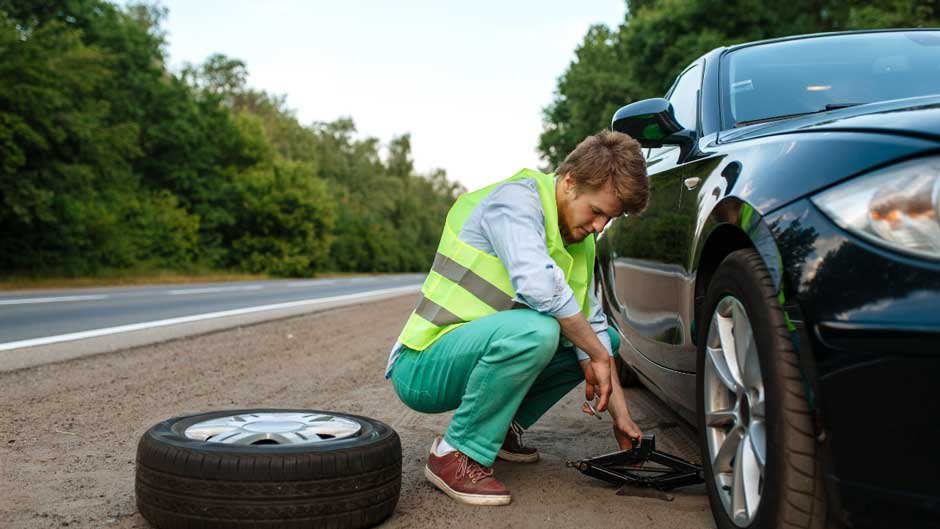Particularly in bad weather or an unknown neighborhood, a vehicle breakdown can be a trying and irritating event. Knowing what steps to take, though, remaining cool can really help to guarantee your safety and reduce hardship. Handling a road breakdown properly in your vehicle calls for these most important steps done in turn.
1. Stay Calm and Evaluate Circumstances
First and foremost, one needs to remain cool. Panicked decisions might compromise you and others, so hedge yourself and use good sense. Pause to evaluate the scene and gauge the level of the issue. Should you observe warning indications on your dashboard, have an abrupt power outage, or detect unusual noises, attempt to pull over cautiously before your car comes to stop.
2. Drive Your Car to a Safe Spot
If feasible, drive your automobile toward a close parking lot, an emergency lane, or the side of the route. Keep clear of stopping in blinds curves or in the middle of the main road; approaching drivers may not notice you soon. If you can’t move your car on a busy highway, turn on your hazard lights at once and stay inside with your seatbelt attached until assistance arrives.
3. Turn On Hazard Lights and Use Warning Signals
Activate your hazard lights to notify other cars once your vehicle is parked safely. Particularly at night or in low visibility situations, this is important. Put reflective triangles or road flares behind your vehicle at the right distance to alert incoming traffic.
4. Stay Inside the Vehicle If It’s Unsafe to Exit
Staying inside your vehicle with the doors locked is usually the safer alternative if your vehicle breaks down on an interstate or another high speed road. Leaving your vehicle close to swift traffic can be risky. Request roadside help and then wait for it to come. Should you have to leave, be sure to get off on the other side from the road.
5. Call for Roadside Assistance or a Tow Truck
Next, after you ascertain your prompt physical wellbeing, look for assistance. In case your vehicle cannot be repaired where it is, you need a professional towing service. Many businesses provide round-the-clock car towing services guaranteeing your vehicle and you can be taken to a safe spot. Give precise data about your whereabouts and the kind of problem when you call for help.
6. Clearly Communicate and Wait On Support
Prepare to supply your accurate location using GPS coordinates, highway mile markers, or nearby landmarks before reaching out to a tow truck service or roadside aid. Use the map function of your phone to pinpoint your location should you find yourself in an unknown place. Stay alert for their arrival; be patient once assistance is headed your direction.
7. Watch Out for People Who Offer Assistance amongst Strangers
Though many people mean well, not everyone stopping to help is reliable. Stay inside your car and make sure your doors are locked if an unknown person comes. Receive aid only from official roadside assistance or a licensed tow truck company. Contact emergency services if you feel threatened.
8. First Engage Simple Troubleshooting Measures (If They Are Safe)
A small problem might in some instances be the source of your breakdown. If you have confidence and it is safe to inspect under the hood, search for typical symptoms of a dead battery, slack wire, or low coolant levels. Knowing how to replace a flat tire will keep you in a safe location where you can carefully continue. Still, steer clear of trying fixes in congested locations.
9. Store an Emergency Kit in Your Vehicle
Preparation for an accident can really affect the level of your security and comfort. A first aid package should have:
- Reflective triangles or flares
- Flashlight with extra batteries
- Basic toolkit
- Jumper cables
- First-aid kit
- Bottled water and snacks
- Warm blanket
- Portable phone charger
Having these first things on hand will enable you to better handle any unexpected failures.
10. Have frequent maintenance to stop next breaks.
Although certain breakdowns are inevitable, frequent vehicle maintenance may lower the risk of unplanned problems. Plan normal inspections of your battery, tires, fluid levels, and brakes. Promptly attend to any warning signals your automobile displays—odd noises, poor performance, dashboard alerts—in case they lead to a breakdown.
Finally
Knowing how to manage it properly can save you many extra headaches, although having a car breakdown is definitely inconvenient. Moving to a secure location, using danger signals, and, when needed, asking from experts will always come first to guarantee your safety. Dependable car towing services can offer fast help guaranteeing you and your vehicle reach safety. Being ready and keeping your car in good shape will help you to travel more comfortably knowing you have less breakdowns.

